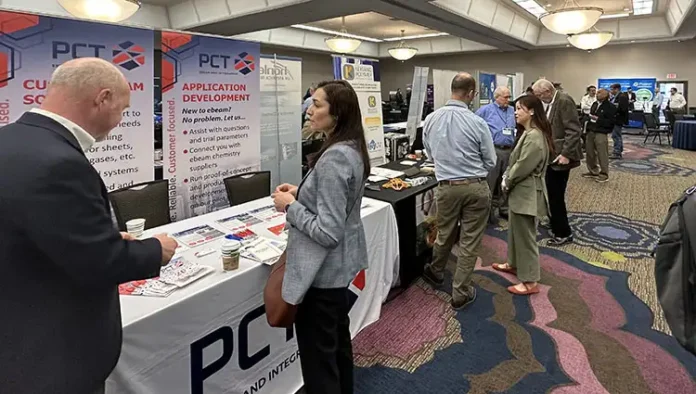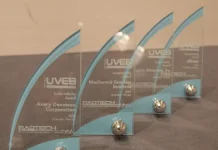By Dianna Brodine, vice president, editorial, UV+EB Technology
The BIG IDEAS for UV+EB Technology Conference was held March 6-8, 2023, in San Diego, California. Focused on BIG IDEAS to advance the global space for UV/EB technology, the event included expert speakers and panelists discussing 3D additive manufacturing, UV LED, printing, automotive, data-driven materials and more.
Susan E. Bailey, Ph.D., Michelman, presented a Short Course on the Chemistry of UV/EB. The course provided an overview of the chemistry of UV-/EB-curable formulations, including radiation sources, classes of photoinitiators, reactive and non-reactive formulation components, and typical challenges to successful curing systems.
The conference kicked off with BIG IDEAS in UV LED, including discussions on increasing cure speed with photoinitiators and the use of UV LED in 3D printing. The morning continued with an overview of the technology developments applicable to the 3D printing market; a panel discussion on direct-to-object printing and a session on the application of UV-/EB-curing in Li-ion battery cell manufacturing. Energy storage and usage was a theme throughout the event, with panel discussions related to battery packaging, the global energy crisis, carbon capture and powering UV sources.
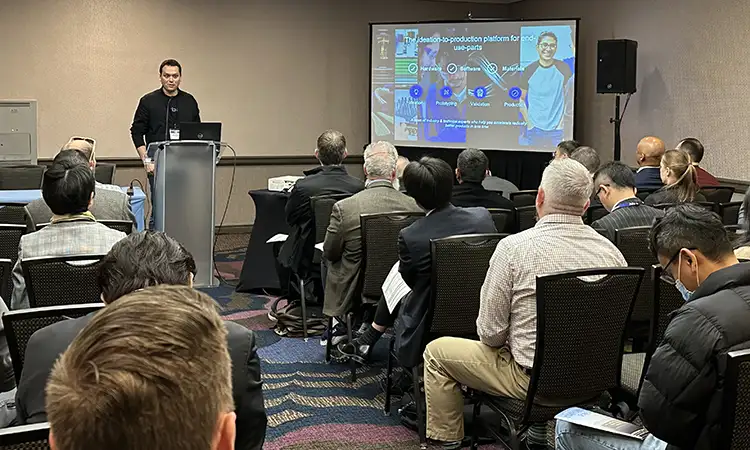
Regulatory topics also were key discussion points, from understanding how UV applications fit within the sustainability directives from regulatory agencies to using the current regulatory landscape as an advantage in marketing the technology to potential customers. Sustainability continued to influence the conversation during panel discussions about the packaging markets and material development.
In addition to the educational sessions, 40 exhibitors were on hand to showcase the latest technology advances in the UV/EB/LED space. The RadLaunch award winners were announced, and – upon conclusion of the programming – attendees were invited to attend RadTech’s annual winter meeting, which was co-located with the conference.
RadTech Annual Winter Meeting Co-Located with BIG IDEAS
Upon the conclusion of the BIG IDEAS Conference, RadTech held its annual winter meeting. Key Committee topics included the following:
Advanced Manufacturing Processes
Submitted by David Harbourne, Committee Co-Chair
The RadTech Advanced Manufacturing Process Committee reviewed RadTech activities within the automotive and aerospace markets and participation in events in 2023. Working with RadTech, members are planning to participate in: WCX 2023, DSCT 2023, CTT 2023, and Fabtech 2023. Following on from discussions from the previous meeting in Cincinnati, “what can Radtech do to promote growth in the use of UV/EB technology in industrial markets?” It was agreed to reduce the number of target applications/markets from 12 to four or five so that we could focus resources on a smaller number of selected markets. The agreed-upon selected markets were automotive, including refinish; aerospace; metal coatings, pipe, beverage cans, coil, appliances; plastic decorating and coatings; and CIPP.
It was noted that “energy storage” already had been “spun off” into an active and focused committee. Leaders of these groups will be asked to prepare action plans for their segments, to be presented to the committee at the next meeting. Anyone interested in participating in these application initiatives should contact Cara Bommarito at cara@radtech.org.
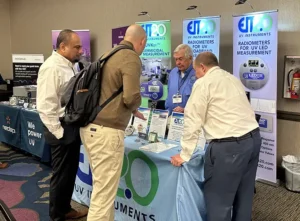
Batteries and Energy Storage
Submitted by Anthony Carignano, Elementis Global LLC, Committee Co-Chair
A presentation by Oliver Hamann (Miltec) was reviewed, that offered a technical overview on the rechargeable energy storage market and the potential for a 100% solid UV/EB curing process for slot die casted lithium-ion cell cathodes as a way of moving away from the current NMP solvent issue. There are still significant hurdles that remain to be overcome regarding PVDF cathode binder UV/EB functionalization. The group also discussed future directions for RadTech including building a more robust, inclusive cross value chain collaboration in the rechargeable battery market; forging closer working relationships with universities. The group also discussed:
- Developing a position paper or a PowerPoint presentation covering areas of opportunity for UV/EB photopolymer chemistry in rechargeable batteries.
- Compiling a list of relevant magazines and periodicals where RadTech related technical articles could be published overviewing the foundations of photopolymer chemistry and equipment and how it could potentially be used in EV battery applications.
- How companies as part of a consortia, may support the development of a working inline demonstration site to show how rechargeable batteries can be made using UV/EB architecture and chemistry.
- Developing contacts at the Department of Energy (DOE) and NATTBATT that RadTech may reach out to for a discussion on the value proposition of energy curing technology.
Printing and Packaging
Submitted by Evan Benbow, Nazdar, Committee Chair
The group discussed updates on the latest reclassification efforts on photoinitiators; the removal of EMK from REACh, which limits the ability to import into the EU; and the lack of progress on the EuPIA Suitability List, which will have further discussions at the end of March at the next PiFood Meeting. Other organizations, such as Recyclass, are pointing to the EuPIA Exclusion Policy; therefore, the impacts of having such a small suitability list can have big impacts on the industry if it gets adopted by other organizations. In addition, the Association of Plastic Recyclers (APR) is pushing to exclude CMR materials from inks as they will accumulate in the recycled packaging, and proposed exposure testing scenarios for TMPTA and Prop 65 were reviewed.
David Biro updated the committee on activities within ASTM. These include:
- Subcommittee D01.56 on printing inks has a work item (WK85444) to develop a standard test method for evaluating the relative lightfastness and weatherability of printed matter. The old standard is outdated and will dovetail with practices under G03.02 (natural and environmental exposure tests).
- ASTM D7244-20 is the standard test method for relative cure of energy-cured inks and coatings. This was re-approved in 2020 and will be reviewed again in 2025.
- ASTM D7767-11 (2018) is the standard test method to measure volatiles from radiation-curable acrylate monomers, oligomers, and blends and thin coatings made from them. It is to be re-approved after review. This is under work item WK85043 under D01.21. This is an extension of method D5403. We want to keep the test method as is.
- ASTM D5403-93 (2021) is the standard test method for volatile content of radiation curable materials. It was re-approved in 2021.
- ASTM D2369- 20 is the standard test method for volatile content of coatings. This is the procedure of choice for determining volatiles in coatings for the purpose of calculating the volatile organic content in coatings under specified test conditions. The inverse value, nonvolatile, is used to determine the weight percent solids content. This is for the volatile content of solventborne and waterbased systems.
- ASTM D3732-82(2017) the standard practice for reporting cure times of ultraviolet-cured coatings. It is being reviewed this year under D01.55 with work item WK85462.
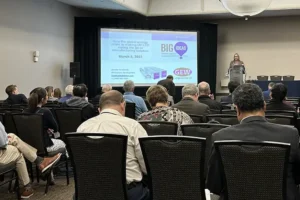
Fingernail Finishing
Submitted by Kevin Sheran, Keystone Cosmetics & Sciences
A small group including representatives from the nail finishing industry met at the RadTech San Diego meeting to discuss a research study and media reports that offer misleading information about UV technology. The RadTech group is working to understand and address misconceptions, and reiterate the importance of developing clear, concise information supporting the continued safe use of UV nail systems. The FDA, Cosmetics Europe, dermatologists and industry experts have reviewed the safety of LED nail lamps devices under normal use conditions and deemed them safe/ low risk. Education around UV radiation, as well as light-emitting diodes (LEDs), continues to be critical for the radiation-curable fingernail industry. All areas of the supply chain, including manufacturers, brands, salon owners and manicurists, will need to participate. Most consumers, salon and brand owners do not understand that LEDs used in nail lamps emit primarily UV-A radiation. The technical and academic information that is available related to safe use of this technology will need to be summarized and circulated as broadly as possible.
In addition, the RadTech Environmental Health and Safety Committee, chaired by Michael Gould, Rahn USA, met to review international, federal and local regulations of interest to industry. Rita Loof, the RadTech West Coast director, updated the group on her efforts to advance UV+EB technology with local regulators. For more information on any of these items, please contact Cara Bommarito, cara@radtech.org.



